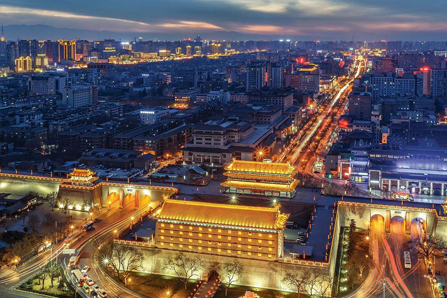
Introduction of Xi'an
Xi'an was one of the most important cradles of Chinese civilization. It marked the start of the famous "Silk Road" that linked China with central Asia and the Roman Empire. And it served as the first capital of a unified China and capital of 11 dynasties periodically from the 11th century B.C. to the early 10th century A.D. Xi'an, or Chang'an as it was called in ancient times, is known as the city of "Everlasting Peace." Located between rivers and mountains in the center of the fertile Guanzhong Plain in Shaanxi Province, Xi'an--the provincial capital of shaanxi province,was a natural place to nurture the nation's civilization.













